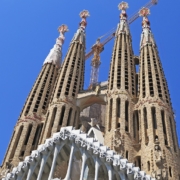Gesamtkunstwerk
The term Gesamtkunstwerk originated in the German language in the nineteenth century to describe creative projects which unify multiple media and disciplines into one work of art, or architecture. Gesamt means total, complete, whole or entire, and Kunstwerk means artwork, so Gesamtkunstwerk could be translated as “total artwork”, “total work of art”, “synthesising work of art”, “comprehensive artwork”, or “universal artwork”. The term may imply using all available media, which might translate as “everything artwork”, and for some the unifying of all things may imply a spiritual goal or ideal, so it is understandable that this more concise and specific foreign term was adopted by English, especially as originally so few of the creators to whom it applied were anglophones.
The works of German composer Richard Wagner, such as the Ring cycle of operas, are perhaps the best known early examples of a Gesamtkunstwerk. Wagner sought to unify music, drama, poetry and visual art and design in an ambitious new way in the middle of the nineteenth century, even having his own dedicated opera house built. At the end of the nineteenth century artists and designers synthesised different disciplines and decoration in the Art Nouveau style, also known as Liberty Style, Modern Style, and in German as Jugendstil, which translates as Youth Style. Well known Art Noveau creators include Alphonse Mucha, Charles Rennie Mackintosh, and Antonio Gaudi.




